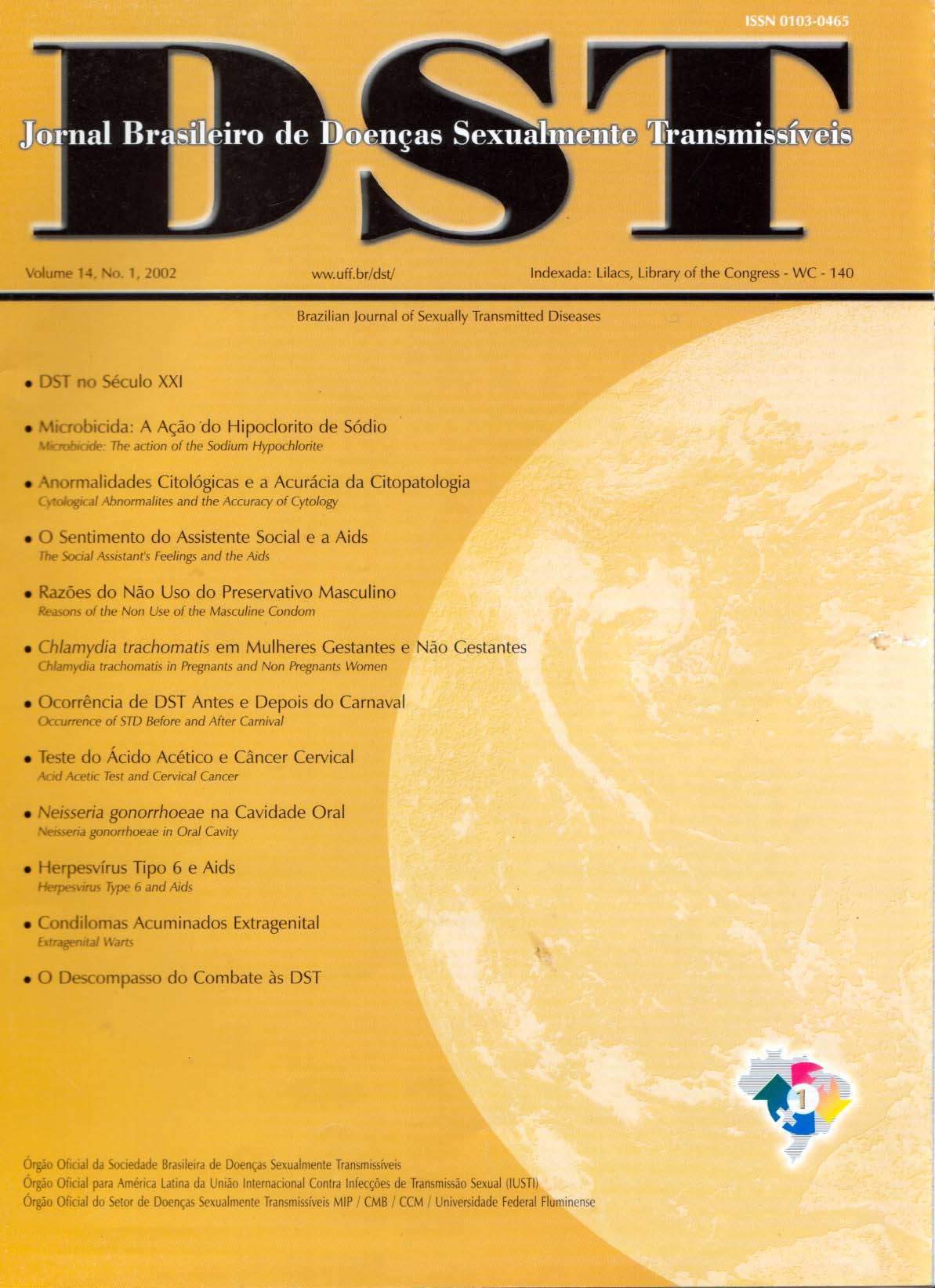Ocorrência de doenças sexualmente transmissíveis antes e depois do carnaval no Rio de Janeiro
Palavras-chave:
DST, Carnaval, EpidemiologiaResumo
Introdução: Festas de Carnaval podem ser encontradas entre os diversos povos e épocas - entre os hebreus bíblicos, nas festas gregas c romanas e na Idade Média. Essas festas até hoje trazem um traço de pecado e libertinagem, mantendo o seu espírito pagão, irreverente e contagiante. Fala-se muito que o espírito festeiro expõe a população a situações de maior risco de contrair infecção tipo DST/Aids. Objetivos: Verificar a correlação entre o Carnaval do Rio de Janeiro e um possível aumento na frequência de DST/Aids. refletida em um aumento no número de atendimentos cm serviço clássico de atenção às DST. Metodologia: Estudo retrospectivo de análise de 2.000 prontuários de pacientes que procuraram o Setor de DST da Universidade Federal Fluminense. 30 dias antes e 30 dias depois do Carnaval, nos anos de 1994. 95. 96. 97 e 1998. A partir daí. selecionou-se 1.005 prontuários de pacientes que chegaram ao setor pela primeira vez. e que tiveram diagnóstico clínico c/ou laboratorial de DST ou infecção genital de possível envolvimento sexual. Verificou-se as frequências dessas doenças e dados como sexo, idade e procedência da clientela. Para analisar a significância dos dados obtidos, submetemos os resultados ao teste não-paramétrico qui quadrado (x 2). Resultados: Dos 1.005 prontuários selecionados. 5291 corresponderam ao período de 30 dias antes do Carnaval, sendo então 48% referentes aos 30 dias após o Carnaval. A predominância foi do sexo feminino, com 64% dos atendidos. A procedência maior foi do município de Niterói com 42%. seguido de São Gonçalo com 34%. Todavia, quando se juntam os pacientes provenientes dos municípios fora Niterói, estes foram mais numerosos. Os diagnósticos mais frequentes foram: cevicocolpite (25%). condiloma acuminado (22%). Vaginose bacteriana (14%) e sífilis (12%). Conclusão: Não houve diferenças estatisticamente significantes, na ocorrência de DST cm pacientes atendidos no Setor de DST- UFF nos períodos pré e pós- Carnaval.












